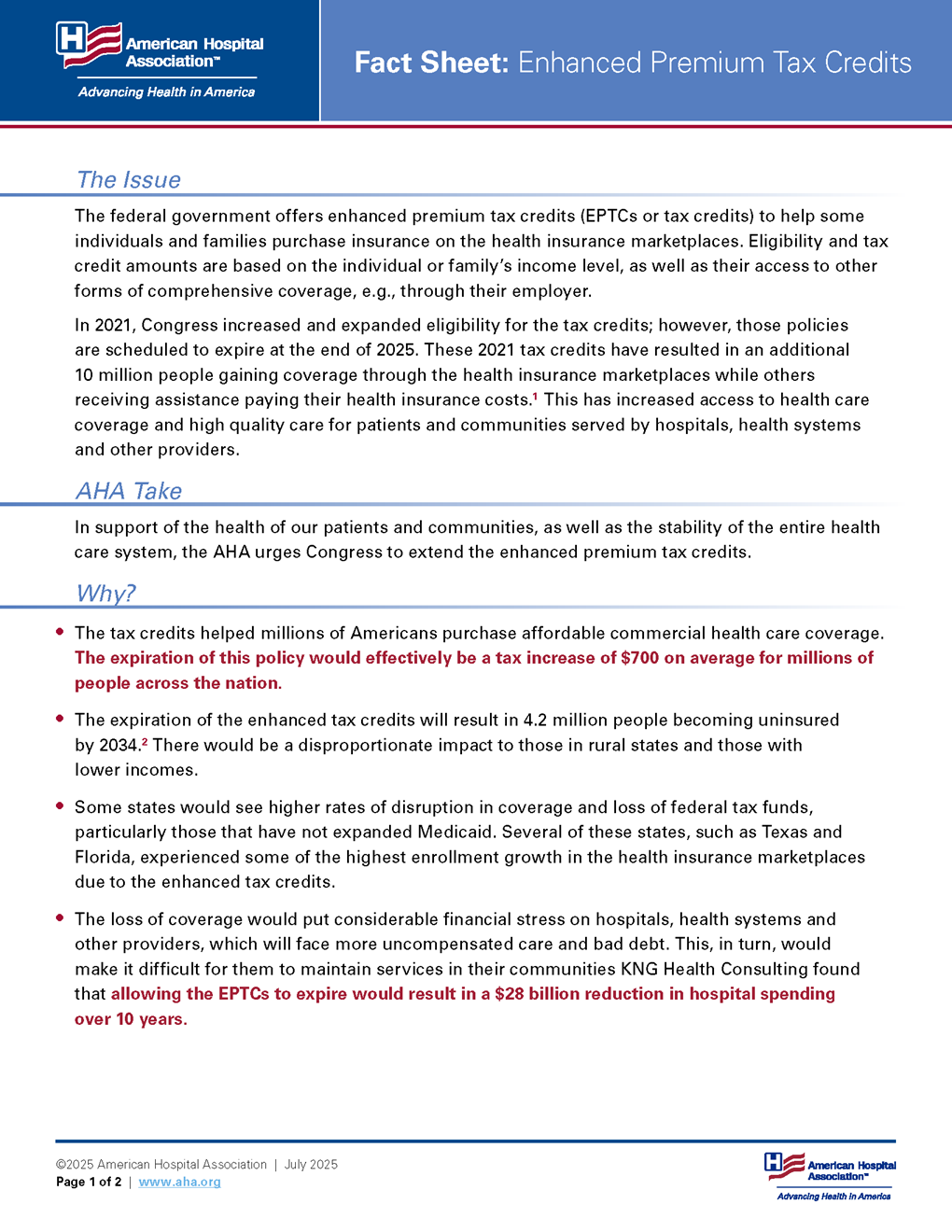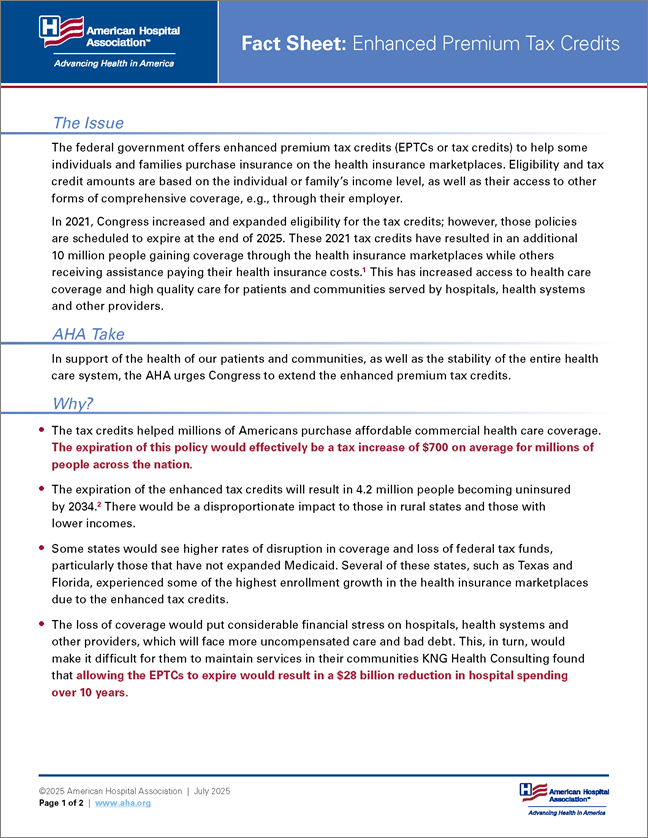

Fact Sheet: Enhanced Premium Tax Credits
July 2025
The Issue
The federal government offers enhanced premium tax credits (EPTCs or tax credits) to help some individuals and families purchase insurance on the health insurance marketplaces. Eligibility and tax credit amounts are based on the individual or family’s income level, as well as their access to other forms of comprehensive coverage, e.g., through their employer.
In 2021, Congress increased and expanded eligibility for the tax credits; however, those policies are scheduled to expire at the end of 2025. These 2021 tax credits have resulted in an additional 10 million people gaining coverage through the health insurance marketplaces while others receiving assistance paying their health insurance costs.1 This has increased access to health care coverage and high quality care for patients and communities served by hospitals, health systems and other providers.
AHA Take
In support of the health of our patients and communities, as well as the stability of the entire health care system, the AHA urges Congress to extend the enhanced premium tax credits.
Why?
- The tax credits helped millions of Americans purchase affordable commercial health care coverage. The expiration of this policy would effectively be a tax increase of $700 on average for millions of people across the nation.
- The expiration of the enhanced tax credits will result in 4.2 million people becoming uninsured
by 2034.2 There would be a disproportionate impact to those in rural states and those with
lower incomes. - Some states would see higher rates of disruption in coverage and loss of federal tax funds,
particularly those that have not expanded Medicaid. Several of these states, such as Texas and Florida, experienced some of the highest enrollment growth in the health insurance marketplaces due to the enhanced tax credits. - The loss of coverage would put considerable financial stress on hospitals, health systems and
other providers, which will face more uncompensated care and bad debt. This, in turn, would
make it difficult for them to maintain services in their communities KNG Health Consulting found
that allowing the EPTCs to expire would result in a $28 billion reduction in hospital spending
over 10 years.
Background
Certain individuals and families are eligible for prospective, monthly tax credits that lower the cost of health insurance marketplace premiums. To be eligible, these individuals or families must:
- Meet certain income thresholds, based on the federal poverty level (FPL).3
- Not be eligible for other comprehensive coverage, including Medicare, Medicaid, the Children’s Health Insurance Program (CHIP), or affordable employer-sponsored coverage (defined as costing less than 8.5% of household income).4
- Be a U.S. citizen or have proof of legal residency or, as of Jan. 1, 2025, be eligible for Deferred Action for Childhood Arrivals.
- If married, file taxes jointly.
The amount of tax credit that an individual or family is eligible for is based on household income, as well as the cost of the second-lowest silver plan in the individual’s market. Once an individual or family has been determined eligible and selected their preferred health plan, the tax credit is immediately applied directly to the premium; thus, the enrollee only needs to pay the remaining amount.
- kff.org/affordable-care-act/issue-brief/a-look-at-aca-coverage-through-the-marketplaces-and-medicaid-expansion-ahead-of-potential-policy-changes
- cbo.gov/system/files/2025-06/Wyden-Pallone-Neal_Letter_6-4-25.pdf
- The income used to calculate the EPTCs is an estimate by the applicant based on what they expect their household income to be in the coming year. When filing taxes at the end of the year, they may receive additional tax credits if their income was lower than expected. Alternatively, they may have to repay some of their tax credit if their income was higher than expected.
- For employer-sponsored coverage to be considered affordable, it must meet a minimum value requirement, and the annual premium must be equal to or less than 9.02% of the individual’s household income.


